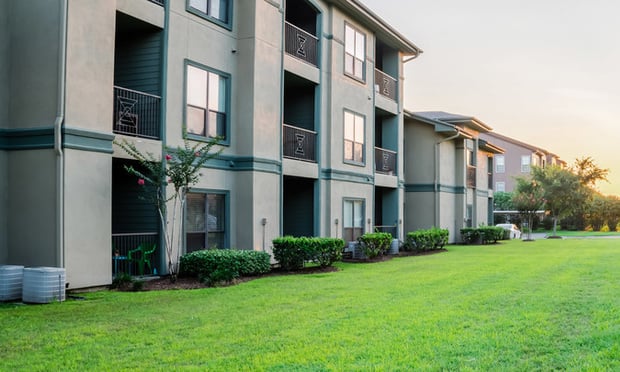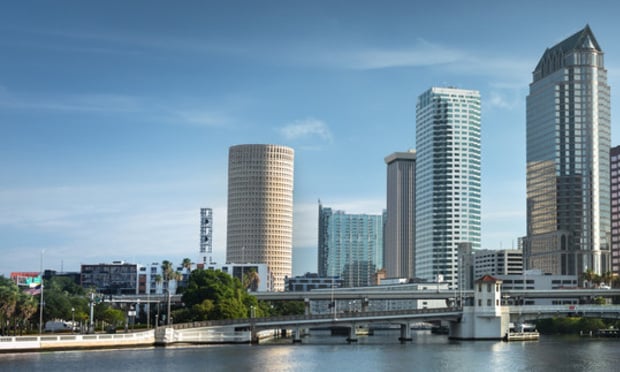Dallas/Fort Worth is emerging as the distribution center of North America, contends Dr. Terrence Pohlen, associate professor and director of the Center for Logistics Education and Research at the University of North Texas in Denton. And the key to the global muscle is a transportation network with two intermodal facilities and more on the way. The region's development dowry has been its strategic positioning at the confluence of north-south interstates 45 and 35 [the NAFTA Highway] and east-west interstates 30 and 20.
"As companies reconfigure their networks, they're going to look at their transportation costs. Bringing it into Dallas, you can hit 70% of the country's population in a two-day drive," Pohlen tells GlobeSt.com. "You're able to keep transportation costs down, but be responsive." Rising fuel prices, a shortage of truck drivers and crumbling infrastructure elsewhere only aid Dallas/Fort Worth's inland port campaign. He says research has shown that 94% of the rigs on the NAFTA Highway stop and do business in Dallas/Fort Worth.
"Dallas has access to four of the five modes of transportation," says Pohlen, who was the keynote speaker for last week's jointly sponsored event by Colliers International's Dallas office and San Diego-based Allen Group. About 80 brokers and developers gathered at the Crescent Club in Uptown for the session.
The region's roads and railroads have always led to the ports of Houston, Long Beach and Los Angeles and connected Mexico to Canada. What has changed to drive up Dallas/Fort Worth's ranking in the logistics world? Globalization, concur Thomas O. Pearson and Chris Teesdale, Colliers' executive vice presidents in Dallas.
"The world has gotten smaller. Dallas hasn't changed," Pearson says. "It's really the way the world does business that's changed."
[IMGCAP(2)]The two brokers, representing 60 years of industrial experience, point out that Dallas/Fort Worth leaders and developers have fast-tracked economic gains in the past five years by adding infrastructure and improving what's in place. "We had taken for granted a lot of our natural resources," Teesdale says, citing the four transcontinental interstates. "We had natural resources that we necessarily hadn't realized the value of before. That is a significant benefit and they all meet right here."
Teesdale says businesses and brokers alike have had to change the way they operate due to globalization. "It's not just a real estate transaction now. We have to go a lot deeper into the end-to-end supply chain," he says.
Experts estimate Dallas/Fort Worth logged $60 billion of international trade in 2007. "Dallas/Fort Worth is the single largest port not on a border or water," Pohlen says. "For not being in a port or on a border, that's a phenomenal amount of trade. Dallas/Fort Worth is going to be the city of choice. It already is, but people don't recognize the logistics strength." He says Kansas City poses the greatest competitive threat for the future to Dallas/Fort Worth, but it's still far behind right now.
Pohlen says it's not just happenstance that Bentonville, AR-based Wal-Mart Stores Inc. put a one-million-sf-plus warehouse at the Houston port and book-ended it with a comparably sized, rail-served structure in Sanger, an Interstate 35-fronting town 52 miles north of Dallas. Wal-Mart's leverage, logistically and at the cash register, is driven by its ability to deliver and turn goods faster and cheaper than competitors. And it's relying on intermodal transport to achieve its distribution goals, he points out.
Geographical positioning and supporting infrastructure will help to protect the region from hard economic times. "People have to eat and freight has to move. That helps to insulate the Dallas/Fort Worth economy," Pohlen says.
Adding to the region's enviable position logistically is it still has plenty of land. "It's just a fortunate benefit that we have the natural resources and land that hasn't been used," Pearson says. "Dallas has consistently ranked very high in all the categories that companies would look at for costs from the point of origin to the point of distribution."
Want to continue reading?
Become a Free ALM Digital Reader.
Once you are an ALM Digital Member, you’ll receive:
- Breaking commercial real estate news and analysis, on-site and via our newsletters and custom alerts
- Educational webcasts, white papers, and ebooks from industry thought leaders
- Critical coverage of the property casualty insurance and financial advisory markets on our other ALM sites, PropertyCasualty360 and ThinkAdvisor
Already have an account? Sign In Now
*May exclude premium content© 2024 ALM Global, LLC, All Rights Reserved. Request academic re-use from www.copyright.com. All other uses, submit a request to [email protected]. For more information visit Asset & Logo Licensing.








